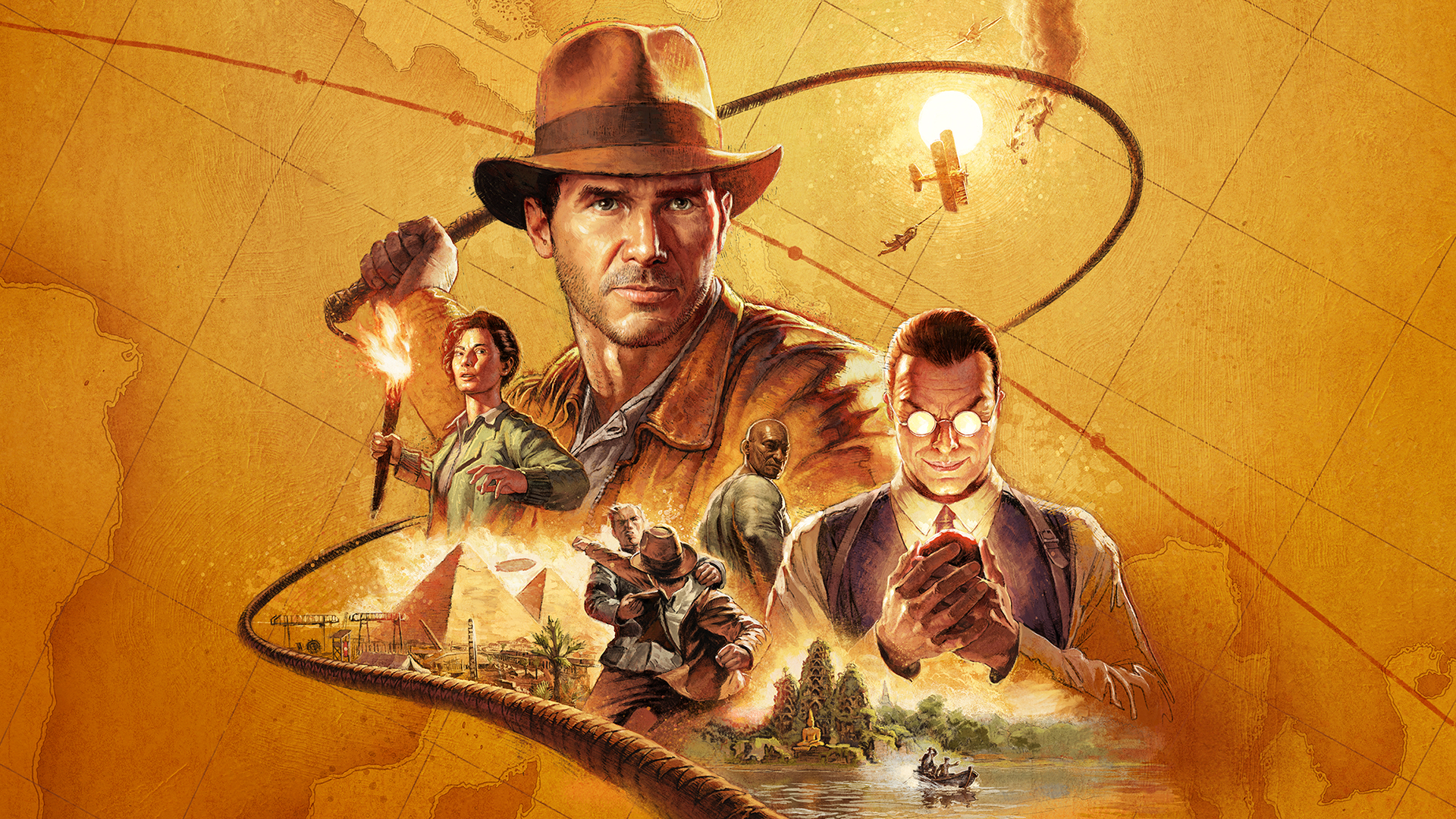From playing dress-up to whipping everything in sight, Indiana Jones and the Great Circle is driven by one question: "What would Indiana Jones do?"
Interview | MachineGames wants players to feel like everyone's favorite archaeologist, but the studio hasn't forgotten its shooter roots
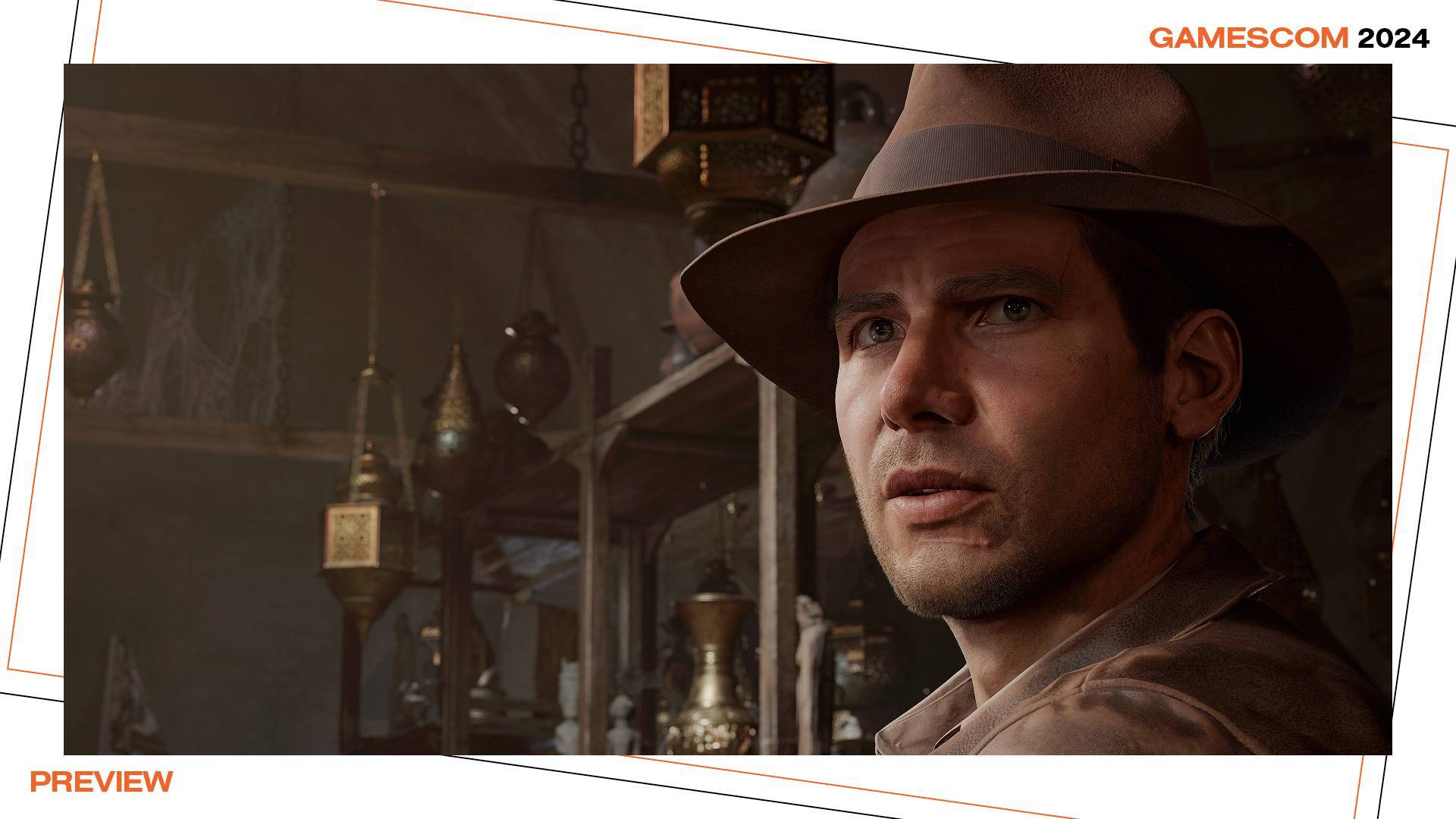
"What are you going to do, Indiana?"
This is a question that's asked of the titular hero in the official showcase reveal of Indiana Jones and the Great Circle that was released earlier this year. As we get swept up in a global conspiracy in 1937, that question is not only one we'll have to answer for ourselves when we step into the famous archaeologist's shoes this December, but it's also the driving force behind what features and tools developer MachineGame's decided to put at our disposal. For every scenario, item, and ability, the team thought on the same question time and again to help players embody the role of the beloved fedora-wearing character: "What would Indiana Jones do?".
"The team has worked on games all the way back to Chronicles of Riddick, The Darkness, Wolfenstein," design director Jens Andersson tells me. "So you can see features in all those games that we like and we borrow from, we've learned from, and we want to do that more and better. But [in Indiana Jones and the Great Circle], it's coming from the character: what would Indiana Jones do? What do you want to do as Indiana Jones?"
"Infiltration and stealth is a big part of that," Andersson continues. "So we have the disguise system in there. We have a more robust stealth system than we had in Wolfenstein. It's [stealth] the approach that you have initially when you encounter a scenario, like you want to go in there, you do want to try to get through it without resorting to combat. And it's only when combat goes wrong that it escalates to this hand-to-hand combat fight system. And even there, that's different, because it's Indiana Jones. It's semi chaotic; there are items, there's a bottle you can pick up and smash on people, other fun stuff like that."
Creative director Axel Torvenius joins in, highlighting one of his favorite items that we can find and use: the banjo. "The banjo is a personal favorite, yes", Andersson agrees. "We have a lot of these kinds of fun objects that just work in the universe, [and we're] really trying to find this comedy tone that we see in the movies as well, carried across in all our gameplay."
Adventure-first
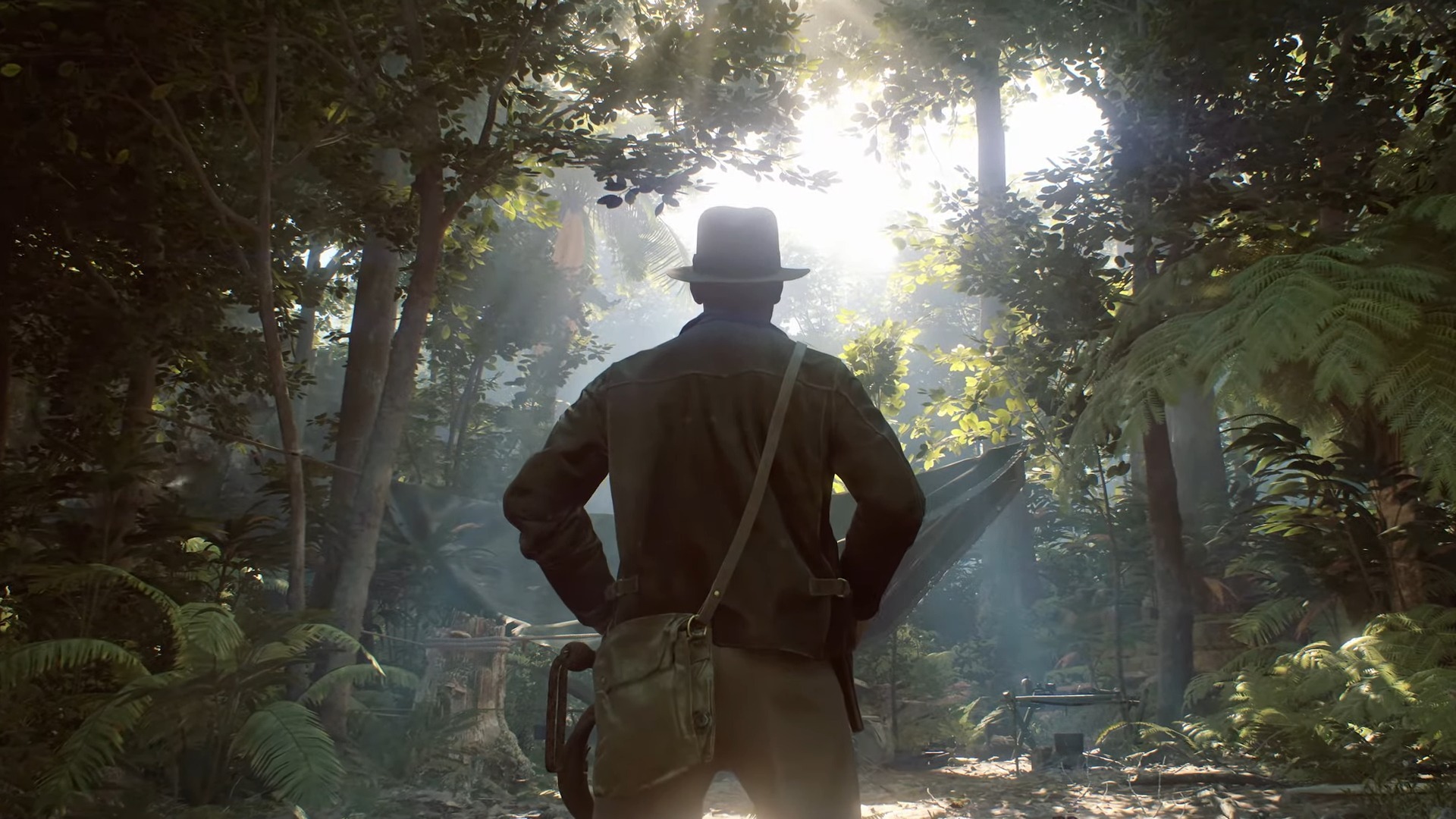
Alongside all of these "fun objects" that we can find and use both in combat and for traversal, guns will still factor into the adventure. Crucially, though, because we are playing as Indiana Jones, everything has been designed so that reaching for a gun is often a last resort. It's a fitting choice that, to me, playfully nods to a famous scene in Raiders of the Lost Ark - after all, who could forget the moment Indiana shoots a foe during a sword fight out of sheer exhaustion?
"If everything goes awry, we have the shooting," Andersson says. "And you know, we make Wolfenstein, we know how to do shooting. But the fun part is that, since it's not in the nature of Indiana Jones, it's not your first choice as a player. And we are really happy that we managed to create a game where that's true, where people can find a gun but decide not to use it because it's not the most fun, it's not the most effective way. We actually have a feature in the game where you can switch modes with your weapon. So you can take your gun that you pick up and turn it into a melee weapon by changing how you hold it. And that's what we see from playtesting: people find this gun, 'it's like, oh, cool gun'. And then switch [modes] and hit people because it's not as loud, it's not as dangerous."
Sign up to the GamesRadar+ Newsletter
Weekly digests, tales from the communities you love, and more
Indiana Jones and the Great Circle is something of a departure for the team at MachineGames. As Torvenius explains, the adventure-first direction of the experience and the move away from being a shooter was a big change. With a mix of linear and more open areas, exploration is also a key aspect of being Indiana Jones. As we venture from location to location, we can encounter various puzzles and uncover mysteries in the world. And as the biggest project the studio has worked on, the size and scale of the game it's creating also presented new challenges.
"We have a long history at MachineGames where we've been very comfortable in doing fairly linear games," Torvenius says. "Sometimes we do somewhat bigger combat scenarios, and things have opened up a bit, but [they're] fairly linear. With this game, we've really tried to do something that is somewhat different. We do have a mix of linear locations, but even the linear locations often offer different routes and ways to progress through or scale in the environment. Then we have these larger sections of the game where the game really opens up, and there's a more open-ended setup in terms of in which order can you do these missions or activities."
True Grit
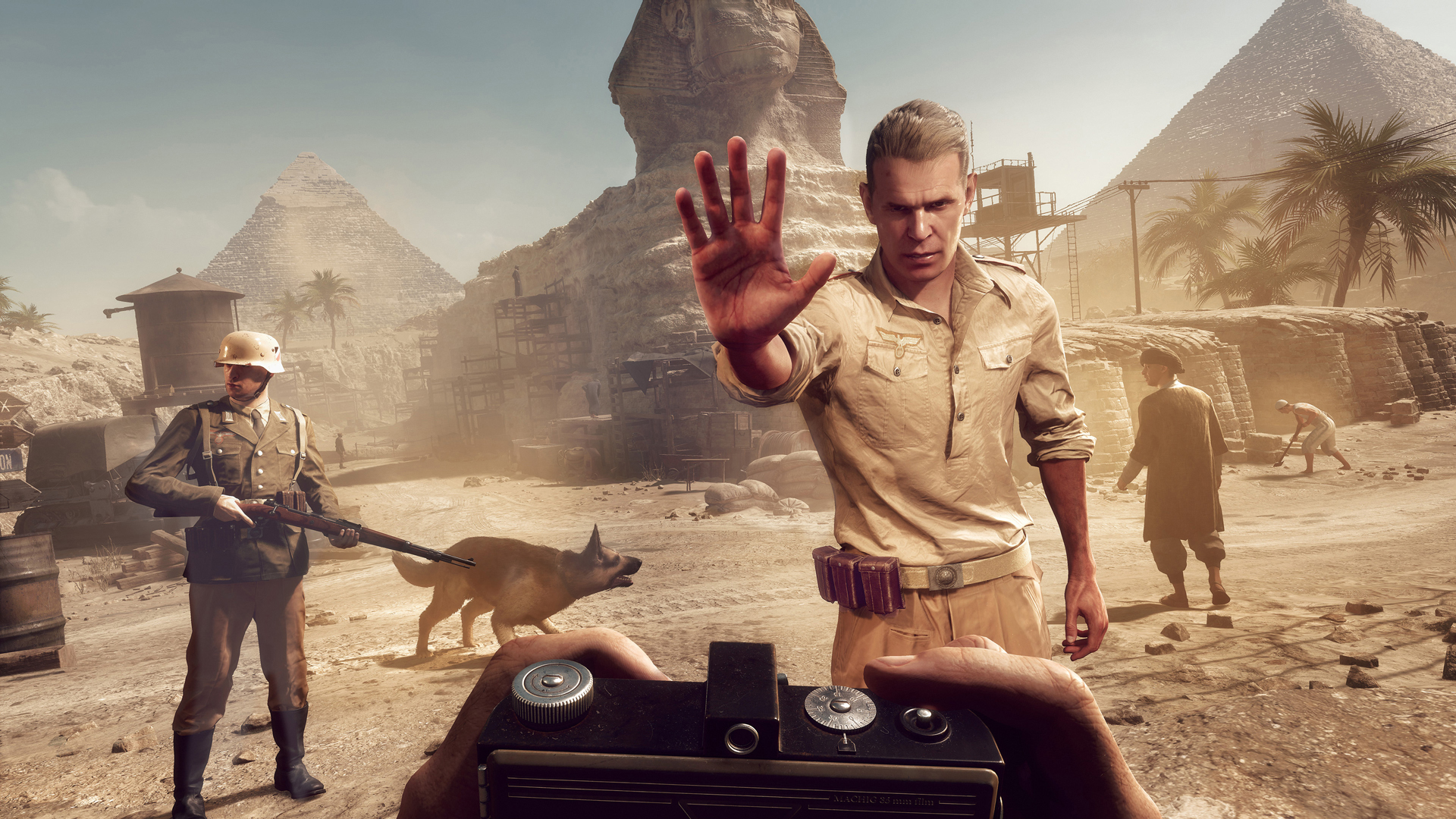
The freedom to explore and take different routes also opens up the way for us to find adventure books in the world that will let us unlock new abilities and skills. In some of the "really big areas that are more freeform" as Andersson puts it, there are also a number of disguises we can find and change into whenever we want, which in turn gives us access to "areas you otherwise wouldn't be welcome in". We've already seen a few examples of these disguises that Andersson describes as a "very big reward" for you to find, from Indiana Jones being a man of the cloth, to dressing up as a worker. While all of the game's systems are "built on who Indiana Jones is", Andersson explains the adventure books, in particular, marry well with exploration.
"It [adventure books] ties into the exploration part of this game. It's not this fixed skill tree system that you see when you stop the game," Andersson says. "It's actually abilities hidden around the world. We have tons of optional content, small mysteries that you find around the corner. If you just look close enough, maybe there's a mystery there. Maybe the reward for solving that puzzle, or whatever the mystery is, is an adventure book that's a new skill for the player, but it basically can improve your skills across all the different systems."
I get to see one of those abilities, True Grit, during the preview. It's a second wind that only Indy could pull off – after being downed in combat, he puts his hat back on to restore health.
"It's such a good reference for what we're trying to do," Andersson says when I ask about True Grit. "It's a little bit quirky, but perfectly balanced. And the hat, it's such an iconic thing throughout the game, we are trying to really work that in. It's a character in its own right. In the movies, you see a lot of silhouettes, and we wanted to recreate that as well. It works fantastically in first-person when we set up these levels where the lighting comes from the background, you go stand in the door frame and see yourself as a shadow on the wall. That is really nice. But also, you know, the hat is part of the journey as well. So as you play throughout the game, you see it getting more worn down. It's really important for us to get that right, because it's such a central part of the character."
Crack that whip
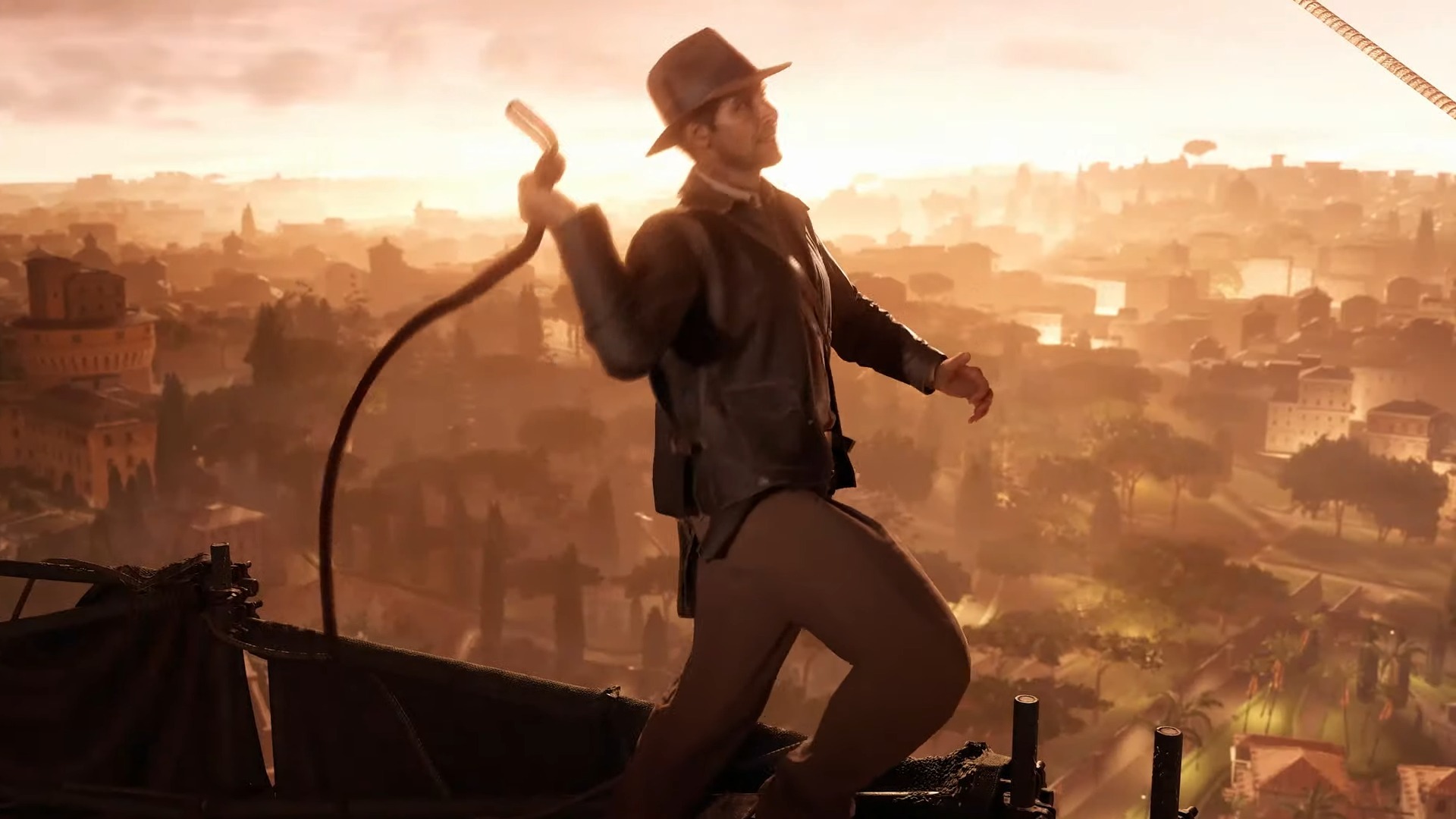
Along with the hat, the whip is also another signature element of Indiana Jones' character that I can't wait to use in the Great Circle. From everything we've seen so far, I hope it feels as satisfying to use as it looks. From using it to latch onto the environment to swing across gaps, to cracking it against enemies and trapping them in a deadly grip, it's one tool we can use in more ways than one. As such, it proved to be the most challenging feature to bring to life for MachineGames.
When I ask how technically difficult making the whip has been, Torvenius admits it's been a challenge. "We've been having a really large team dedicated [to the whip] from different departments within MachineGames," they explain. "We have some amazingly talented engineers and programmers that have been working specifically with making sure that the simulation and the physics of it works as we want it to, that it behaves and feels dynamic and organic and natural. There's animation components that ties into it as well, because at some point, maybe we need more control over it. And then there are animated aspects of it. It's the look of it, it's the sound of it."
"We even had this super amazing field trip by our talented audio team. Up very high up in the north is this Swedish bullwhip championship" Torvenius continues. "They rigged up a lot of mics and took a lot of good photo references. It's then, of course, the amazing work by all designers and level design and game designers to make sure that we have scenarios in the game, we have setups in the environment, where it feels like you can dynamically use this [the whip] constantly and everything else in terms of visual guidance. Where can my whip attach in the game? There's so many components in it, so the whip has really such a big piece of the core of the game to really expand across multiple disciplines within MachineGames. But we're very, very happy and excited where we are now with it."
The whip is undoubtedly what I'm most excited to try out when the December 9 release date rolls around, but there's so much MachineGames is doing that piques my interest as a longtime fan of the movies. From the way the team is trying to create a world set in 1937 that also captures the '80s matinee action of Raiders of the Lost Ark, to how they've baked in every feature and ability to make sense for Indiana, it's quickly become one of most anticipated games of the year.
Whether it will all come together remains to be seen, but from speaking with Torvenius and Andersson, it's clear the team are big fans of Indiana Jones themselves, and with the game arriving on Gamepass, Andersson says they already feel the pressure of delivering for a wider audience. Ultimately, though, the team hopes that hardcore fans and even people that are new to Indiana Jones will enjoy the experience. "A dream here," Torvenius says, "would of course be that someone of an older generation that maybe grew up with the movies would have the possibility to play it with their kids, who maybe love games, but don't necessarily know the Indiana Jones movies."
"Yeah," Andersson agrees, "[hopefully they will] finish the game and then directly go watch the movies."

I started out writing for the games section of a student-run website as an undergrad, and continued to write about games in my free time during retail and temp jobs for a number of years. Eventually, I earned an MA in magazine journalism at Cardiff University, and soon after got my first official role in the industry as a content editor for Stuff magazine. After writing about all things tech and games-related, I then did a brief stint as a freelancer before I landed my role as a staff writer here at GamesRadar+. Now I get to write features, previews, and reviews, and when I'm not doing that, you can usually find me lost in any one of the Dragon Age or Mass Effect games, tucking into another delightful indie, or drinking far too much tea for my own good.
